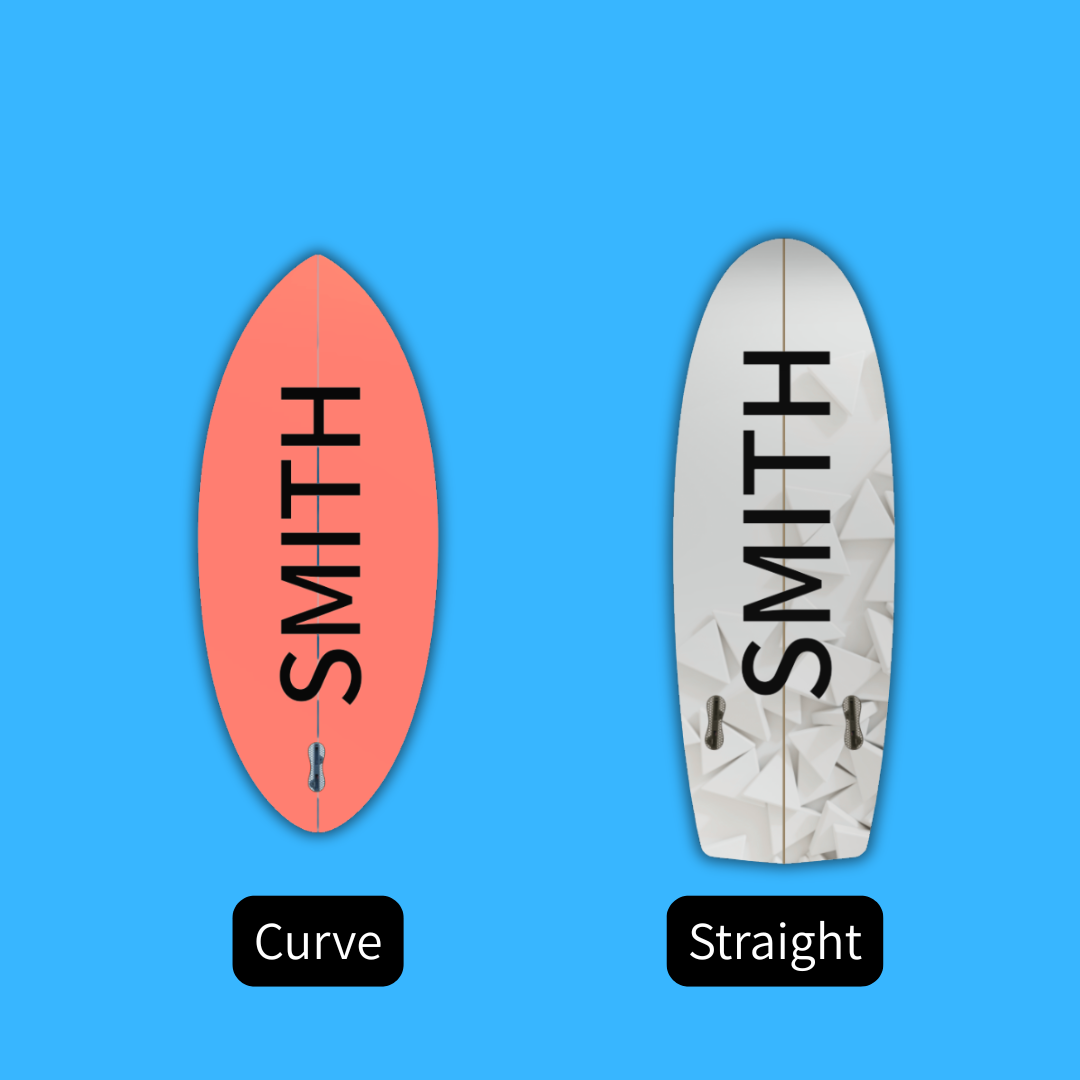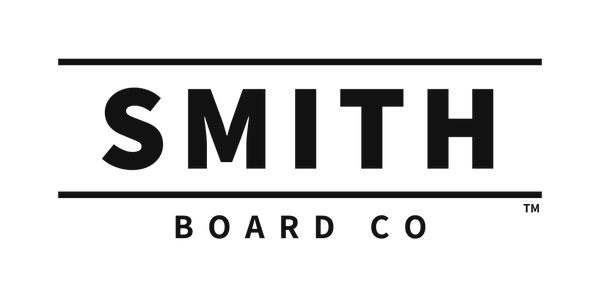
Curve Appeal: How Your Board’s Outline Shapes Performance
Share
When we talk about wakesurf board design, one critical aspect often overlooked is the board’s outline curvature, the shape you see when looking straight down at the deck from above. While length, width, and rocker get plenty of attention, outline curvature significantly influences how your board rides, affecting speed, agility, and your ability to get air.
In this post, we'll explore the physics behind outline curvature and why it’s essential in shaping your wakesurfing experience.
Understanding Outline Curvature
Outline curvature refers to how the board’s width changes from nose to tail when viewed from above. Boards can have varying degrees of curvature:
- Curvier Boards: These have rounded outlines and wider midpoints.
- Straighter Boards: These designs feature more parallel rails, creating narrower, sleeker outlines.
Designers intentionally adjust outline curvature to optimize specific riding characteristics, making it a critical factor in board performance.
The Physics Behind Outline Curvature
Outline curvature fundamentally impacts wakesurf board performance through fluid dynamics and physics principles. The shape of the board influences how water flows around its perimeter. Boards with straighter outlines streamline water flow, thereby reducing the drag force experienced. Drag force is described by the equation:
Fdrag = ½ ρCdAν²
where ρ is the density of water, Cd is the drag coefficient, A is the surface area facing the flow, and ν is the velocity of the board. Additionally, outline curvature affects surface area distribution across the board, directly influencing buoyancy and maneuverability. Buoyancy is governed by Archimedes’ principle, where the buoyant force equals the weight of the displaced water:
Fbuoyancy = ρVg
where V is the volume of water displaced, and g is gravitational acceleration. Finally, the pivot dynamics of turning are impacted by curvature, as the shape influences the effective pivot points along the length of the board, determining ease and sharpness of turns.
How Outline Curvature Affects Speed
Straighter Outline
Straighter outlines reduce drag by streamlining water flow. This translates to quicker acceleration and higher top-end speeds, ideal for riders who prefer smooth, efficient glides across the wake. The higher speed potential of straighter boards enables riders to generate more kinetic energy, which can then be converted into greater height during aerial maneuvers.
Curvier Outline
Curvier boards inherently have more drag, which reduces maximum speed slightly. However, the increased drag provides control, making these boards beneficial in steep waves or when managing speed within tighter wakes.
Outline Curvature and Agility
Curvier Outline
Boards with pronounced curves have shorter turning radii, significantly boosting agility. They excel at quick, sharp cuts, and tight, dynamic carves, making them ideal for riders who love aggressive maneuvers.
Straighter Outline
Straighter outlines yield a longer turning radius, promoting smoother, more predictable, sweeping turns. This suits riders who prefer controlled tricks and flowing maneuvers.
The shape significantly influences how responsive your board feels transitioning from rail to rail.
Outline Curvature and Air (Pop & Lift)
Outline curvature significantly affects your ability to achieve height and stability when hitting aerial maneuvers:
Curvier Boards
Typically wider midpoints or tails provide increased effective surface area under your feet. This extra surface area enhances buoyancy and lift, significantly boosting the "pop" off the wake.
Straighter Boards
These provide less immediate lift but offer greater stability during landings, making them beneficial for riders prioritizing control. The speed they are able to generate also allows for greater max height potential.
Each curvature profile has trade-offs between maximum pop potential and landing stability, so choosing the right outline curvature depends heavily on your aerial goals.
Integrating Curvature with Length and Width
Outline curvature doesn’t exist in isolation, it's deeply connected with length and width:
- Short and Curvy: Extremely agile, optimal for quick turns and dynamic aerials.
- Long and Straight: Fast, stable, ideal for smooth glides and predictable maneuvers.
- Short and Straight: Responsive turns with moderate stability, ideal for playful riding.
- Long and Curvy: Provides excellent buoyancy, smoother carves, and significant lift at the expense of a bit of top-end speed.
Balancing curvature, length, and width creates a board tailored specifically for your riding style.
Choosing the Right Outline Curvature
- Beginners & Intermediate Riders: Moderate curvature offers balanced performance, ensuring stability and ease of maneuverability.
- Advanced & Pro Riders: Opting for more specialized curvature based on specific maneuvers or riding styles will enhance performance significantly.
Understanding your riding preferences is crucial in selecting the perfect board outline curvature.
Curvature as a Core Performance Variable
The outline curvature of your wakesurf board significantly shapes your on-water experience. The physics behind this critical design factor directly impacts your board's speed, agility, and aerial potential. Ultimately, choosing the correct curvature aligned with your style unlocks the best possible ride.
At Smith Board Co., every board outline is designed with intent, crafted specifically to enhance your riding style and elevate your experience on the water.
Curvature isn't just aesthetics, it's essential physics in action.
